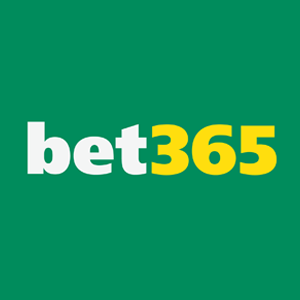What Are Betting Odds? How Do Betting Odds Work?
Understanding and calculating odds is a crucial skill for anyone engaging in betting activities. These odds represent the bookmakers' assessment of your selection's likelihood of winning and the potential winnings from a successful wager. While the intricacies of betting odds may seem daunting initially, our comprehensive guide ensures that you acquire the necessary knowledge to navigate them, enabling you to make more informed decisions when participating in online gambling.
What are betting odds?
Betting odds serve as a tool for bookmakers to represent the probability of an event occurring and indicate the potential winnings for players. Low odds suggest a higher likelihood of the outcome, while high odds imply a lower likelihood.

What is probability?
Probability is the measure of the likelihood or unlikelihood of an outcome. If an outcome has a low probability, it is less likely to occur, while an outcome with a high probability is more likely to happen.
For instance, if asked to choose a number between 1-10, and you must guess the chosen number, you have a 10% chance of being correct, as there are 10 possible outcomes.
On the other hand, if tasked with guessing whether the chosen number is even or odd, you would have a 50% chance of being correct, given only two options.
Bookmakers leverage probability to determine odds, and they use this information to set the prices for each market.
- You might be interested: What Is Handicap Betting?
How to Utilize Odds for Probability Calculation
Probability can be determined by analyzing the odds of a specific outcome, enabling you to assess the likelihood of that outcome occurring.
The probability can be calculated using the formula: Probability (%) = B / (A+B). Substituting A and B with numbers yields the following examples:
- 9/1 becomes 1 / (9+1) = 0.10 - Indicates a 10% chance of occurrence.
- 4/1 becomes 1 / (4+1) = 0.20 - Suggests a 20% chance of occurrence.
- 1/1 becomes 1 / (1+1) = 0.50 - Implies a 50% chance of occurrence.
- 1/4 becomes 3 / (1+3) = 0.75 - Reflects a 75% chance of occurrence.
Probability is computed using the formula (10 / A) / 10 = Probability. Applying this to examples:
- 10.00 becomes (10 / 10) / 10 = 0.1 - Signifies a 10% chance.
- 5.00 becomes (10 / 5) / 10 = 0.2 - Indicates a 20% chance.
- 2.00 becomes (10 / 2) / 10 = 0.5 - Suggests a 50% chance.
- 1.25 becomes (10 / 1.25) / 10 = 0.8 - Represents an 80% chance.
Understanding these calculations empowers bettors to convert odds into probabilities for informed decision-making.
Betting Odds Types: Fractional, Decimal, Moneyline Odds
There are three main types of betting odds: fractional (British), decimal (European), and moneyline (American). Among them, Decimal odds are the most common type of AFCON betting odds that punters will find with South African operators.
Let's explore each type in detail:

1. Fractional Odds (British)
Fractional odds express the profit relative to the stake. The first number represents the potential profit, and the second number represents the stake.
Eg: A fractional odd of 5/1 means you would make a profit of $5 for every $1 wagered.
To calculate potential profit, multiply your stake by the first number and add the stake. In the example, a $10 bet at 5/1 would yield $50 profit plus the original $10 stake.
2. Decimal Odds (European)
Decimal odds represent the total payout, including the original stake.
Eg: A decimal odd of 6.00 means a $1 bet would result in a total payout of $6, including the $1 stake.
To calculate potential profit, multiply your stake by the decimal odds. In the example, a $10 bet at 6.00 would yield $60 (including the $10 stake).
3. Moneyline Odds (American)
Moneyline odds show the amount needed to win $100 for negative odds or the potential profit on a $100 stake for positive odds.
This format may seem confusing compared to fractional or decimal odds initially, but it becomes clearer with practice. American odds are presented as either positive or negative numbers:
Underdog (Positive Number):
A positive number signifies the potential profit for a £100 bet.
Eg: +250 - Bet £100, win £250, making a profit of £350.
Eg: +250 - Bet £10, win £25, making a profit of £35.
Favorites (Negative Number):
A negative number indicates the amount you need to bet to make a £100 profit.
Eg: -125 - Bet £125, win £25, resulting in a profit of -£100.
Eg: -125 - Bet £10, win £2, resulting in a profit of -£8.
Understanding these examples helps bettors interpret American odds and make informed decisions based on the potential profits and risks associated with each wager.
For positive odds, divide the potential profit by 100 and multiply by your stake. For negative odds, divide your stake by the absolute value of the odds and multiply by 100.
This comprehensive guide elucidates the concept of betting odds and their functionality, providing insights into why bookmakers employ odds and how you can utilize them to calculate probability. Equipped with this knowledge, you are now prepared to commence your betting journey.






















